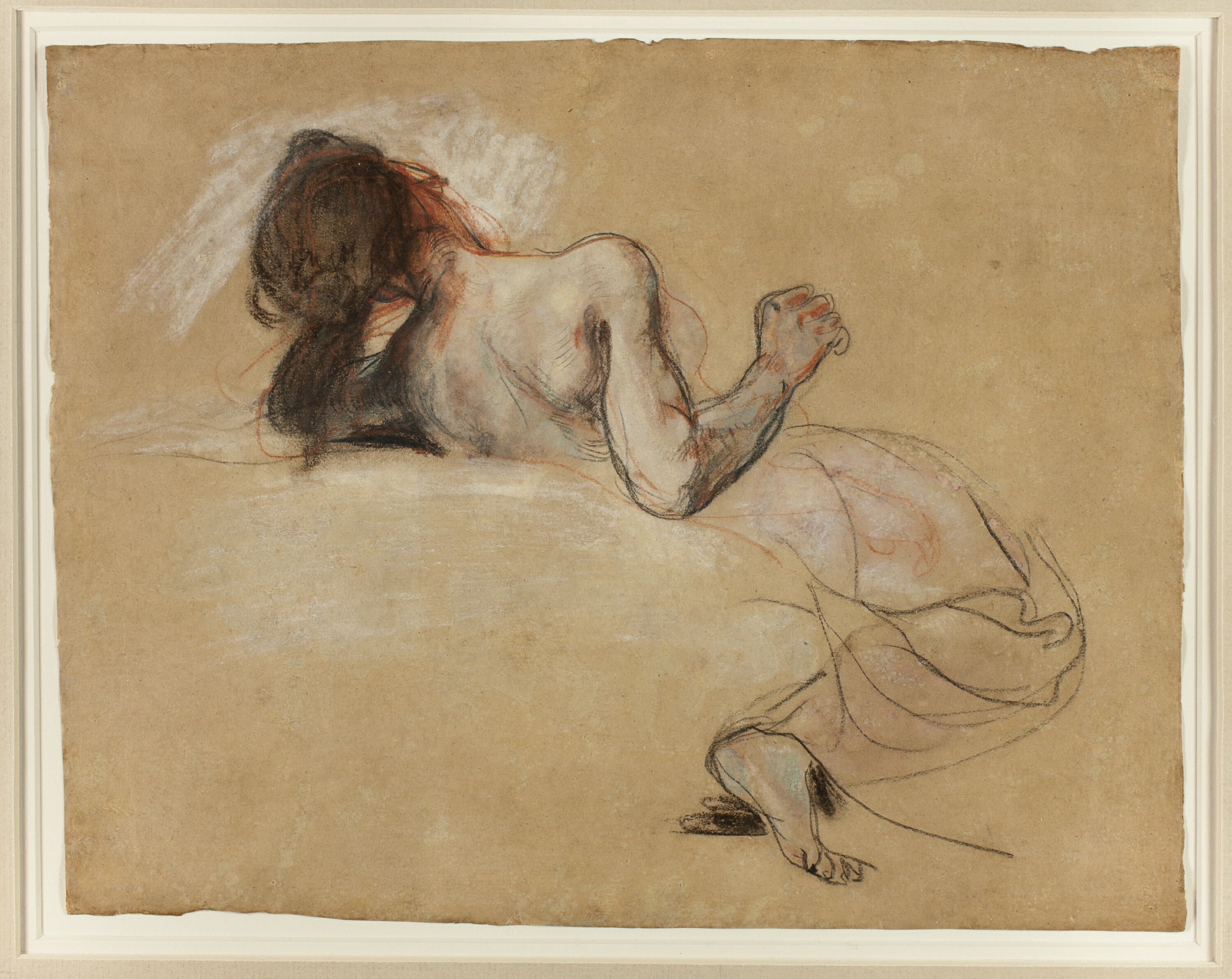Crouching Woman is one of five pastel studies for Eugène Delacroix’s monumental painting The Death of Sardanapalus (check it out in our Archive), which helped establish his reputation as the leader of the French Romantic movement. Of the few pastels that Delacroix produced, this is the only group that can be related to a single painting. Inspired by an 1821 play by the English Romantic poet Lord Byron, the canvas dramatically depicts the last king of the Assyrians. Reclining on his bed moments before his own suicide, the king gazes passively at his wives, concubines, and livestock as they are slain by his order to prevent their slaughter by the enemy army that has just defeated them. In this expressive image of one of the concubines, Delacroix convincingly captured the horror of the moment. With a sure, sweeping line, he described the rhythmic, taut posture of a figure recoiling from a blow or the stab of a knife. Although this powerful figure is significantly truncated in the final painting, the pastel provides insight into Delacroix’s creative process, and its sensual drama is representative of the Romantic period.
Beautiful, isn't it?
P.S. Read more about Eugène Delacroix here.
Remember our amazing DailyArt Prints? We have just released a new drop - check out ten new prints printed in magnificent quality. Among them you will find The Great Wave, The Lady with an Ermine, and Lady with a Parasol. Check them out here!


 Eugène Delacroix
Eugène Delacroix